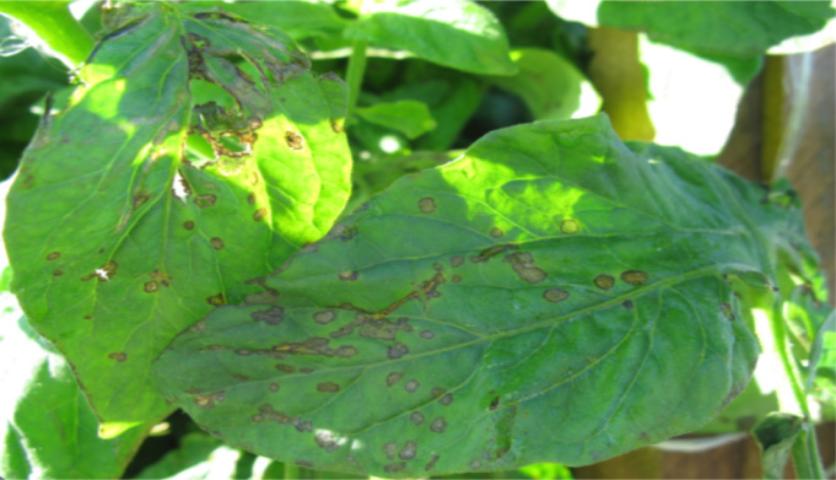By Clint Thompson
Tomato producers applying fungicides should be wary the management tactic could exacerbate bacterial spot disease.

Credit: Gary Vallad, UF/IFAS
Gary Vallad, professor of plant pathology at the University of Florida Institute of Food and Agricultural Sciences (UF/IFAS) Gulf Coast Research and Education Center, spoke at the Florida Tomato Conference in LaBelle, Florida, last week. He cautioned growers to consider the spray applications they apply over the course of the season.
“I question the value of spraying. We’ve had trials where we’ve gone in and not sprayed. The bacteria is going to be there regardless. I understand you need to spray to get fungicides and insecticides out, that’s fine, but the more you spray, especially for bacterial spot, you’re just aiding it. You really are,” Vallad said. “Sometimes spraying too much can be overly counterproductive for it and just actually spread it more. It could make a bad situation even worse.
“When you’re using a high-volume sprayer and you’re running that thing at 200 psi, I cannot think of a more effective means of moving bacteria around.”
According to UF/IFAS, bacterial spot is severe in the Southeast when weather conditions are conducive for development. These include high temperatures, high humidity and rain.
“Anywhere you grow tomatoes in the Southeast, you’re going to have bacterial spot. It really comes down to just the conditions, the temperature. When you start getting temperatures up in the 80s and above, that’s very favorable for bacterial spot,” Vallad said.
Unfortunately, there are not reliable fungicide tools in the arsenal for growers, mainly due to the disease being resistant to copper.
“We really don’t have any good products that are going to reduce disease severity significantly. Even a little bit you see, you don’t see any improvement in yield ever. That’s not just my data, you can look at tons of data from other researchers,” Vallad said. “If you look at the economics of it, I just don’t see us breaking even.”
Symptoms of bacterial spot can affect all of the plant parts aboveground. Spots are generally dark brown to black on the leaves and stems. The disease usually begins on the lower leaves, and symptoms are initially more visible on the underside of the leaves.










